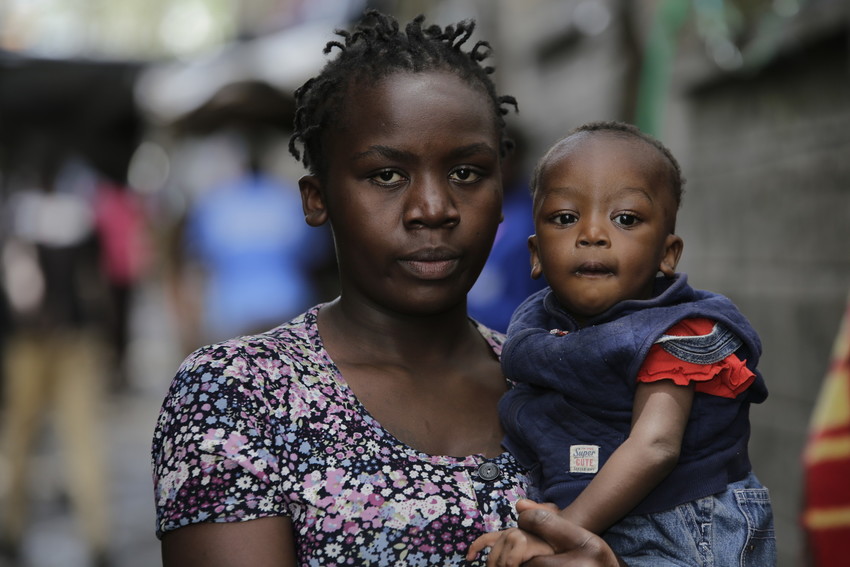Site will be
unavailable for maintenance from June. 4, 11:30 p.m., to June 5, 12:30 a.m. ET. Thank you for your
patience!
“Everything We’ve Got”: ChildFund’s COVID-19 Response Plan
Posted on 05/01/2020

Ruth and her son, Scampy
Soap or food — which would you choose?
For Ruth, who lives with her two children, parents and several other family members in a leaky cardboard-and-metal-sheet house in Nairobi, Kenya’s Mukuru slum, there’s no question.
“If you buy soap, you won’t eat,” she says.
The Spiral of Crises Caused by COVID-19
Right now, with the world on hold due to the COVID-19 pandemic, this is the reality for millions of families living in the world’s poorest places. In low-income countries, as many as 80% of the population — 2 billion worldwide — make their living from informal work like subsistence farming, selling vegetables or trinkets at the market or odd jobs like unloading trucks, washing windows, doing construction work, cleaning, whatever they can find. No one is finding much work at all these days, and that’s the problem.
COVID-19 is a health crisis that’s creating an economic crisis that’s leading to further health crises — especially for children and families living in fragile economies like those in ChildFund’s program countries. One particularly devastating result of these crises is child hunger. Compound that with added stress from crowded conditions, helplessness and fear, and you have a recipe for violence against children. Children are in danger, and there’s no time to lose.
ChildFund’s First-Ever Global Emergency Response
“ChildFund is aiming the full power of our expertise and funding at ensuring that COVID-19 does not deny any child the right to be healthy, educated and safe,” says Anne Lynam Goddard, ChildFund’s President and CEO.
And “full power” is no exaggeration. Our $56 million COVID-19 Response Plan is our biggest emergency response in our 80-year history. It’s also our first-ever global emergency response, aiming to support 6.3 million children and family members throughout the pandemic and the recovery to follow.
The initiative focuses on four priorities:
- Stop COVID-19 from infecting children and families. We are installing community hand-washing stands; educating communities about symptoms, hygiene and where to get testing or treatment; and distributing soap, hand sanitizer, gloves and masks to families and health workers.
- Ensure that children get the food they need. We are providing the most vulnerable families with money to help them keep food on the table, pay rent and cover other basic needs. Where possible, we are also distributing food and basic household items directly, while carefully abiding by COVID-19 protection measures.
- Keep children safe from violence — physically and emotionally. We are supporting community-based child protection systems that identify, respond to and refer cases of abuse, neglect, violence or exploitation. We are also providing online psychological first aid and counseling and supporting temporary shelters for children who live on the street.
- Help children continue learning. While schools remain closed, we are offering activities and tutoring sessions online or by radio, staying vigilant to the potential risk of abuse that comes with increased internet use. For students in places where internet access is unavailable or unreliable, we are distributing home learning kits with materials and guidelines for their use.
“Families are at the center of this plan,” says Goddard. “If they have the wherewithal they need to hold on to their stability and keep their children’s development on track, they’ll be able to go forward strong. We’re going to give it everything we’ve got so that they do.”
Read our COVID-19 Response Plan, and join our efforts by giving now.
Loading...


